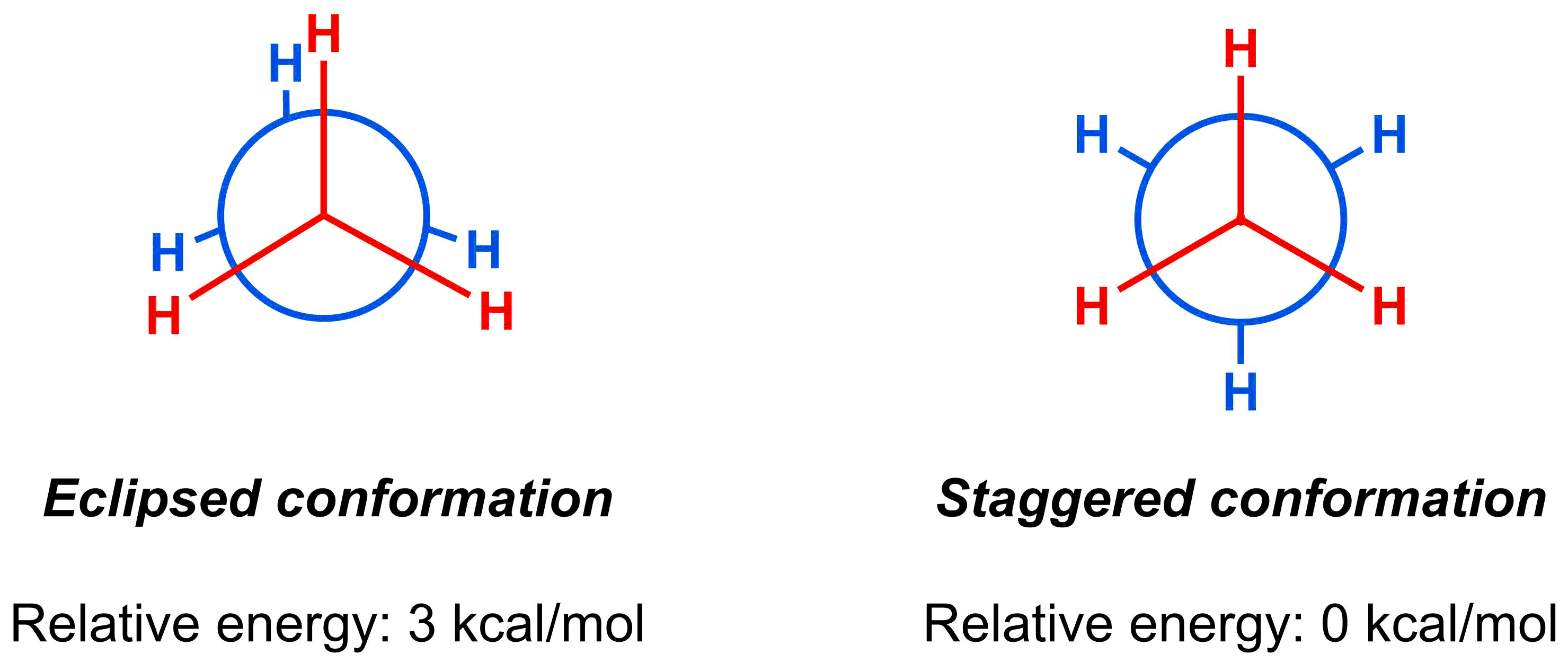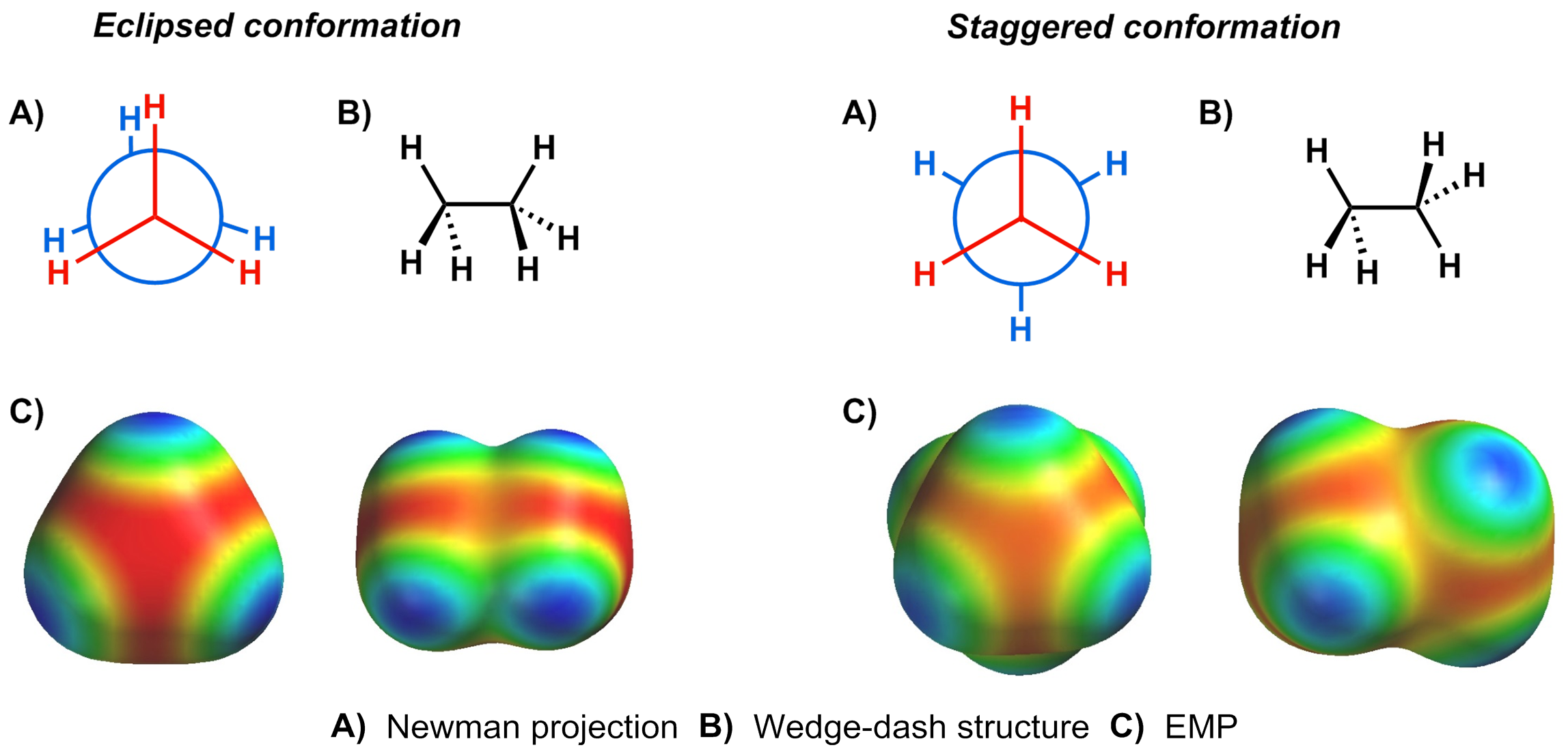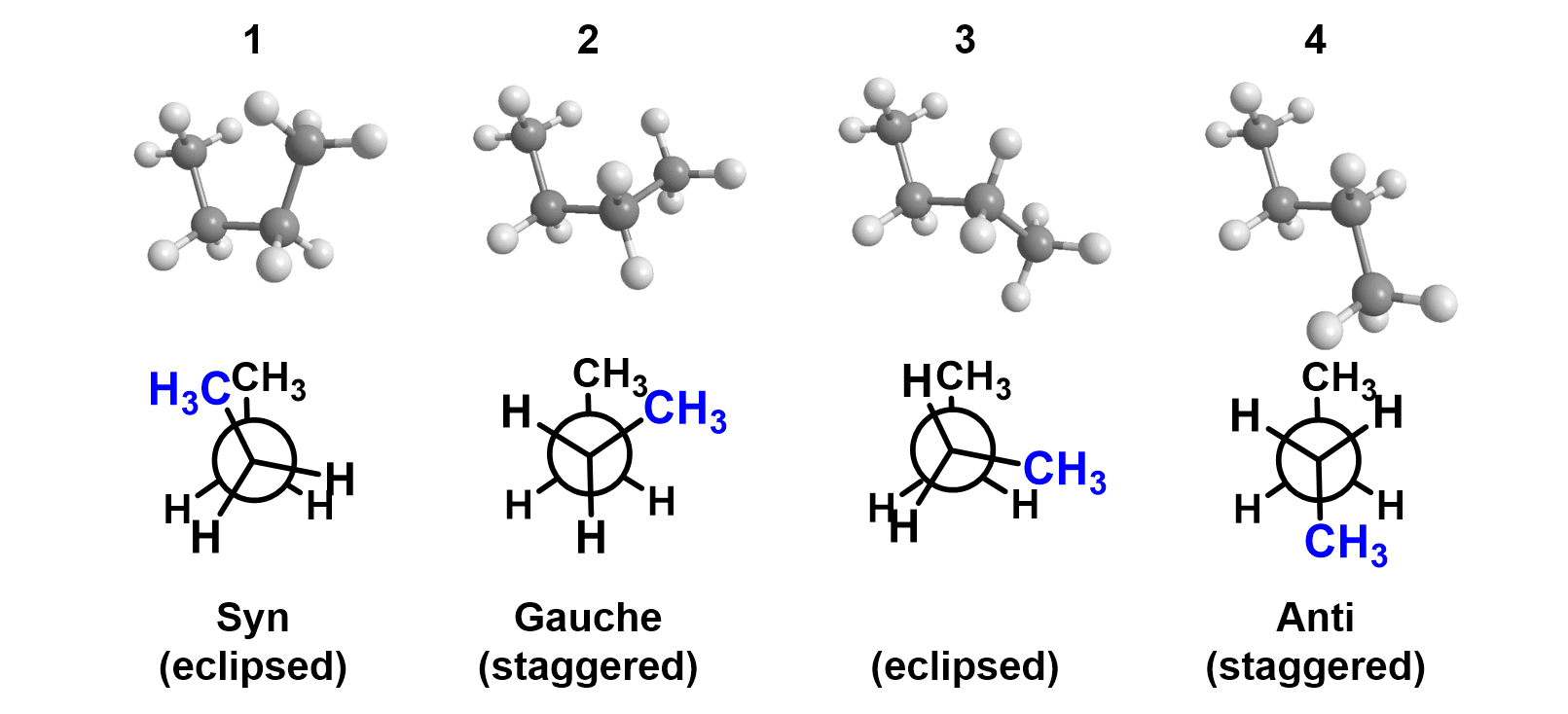- Eclipsed conformations (when the bonds off adjacent carbon atoms line up) are the least stable.
- Staggered conformations (when bonds off adjacent carbon atoms are offset) are the most stable.
- Torsional strain is strain due to the repulsion of electrons in bonds.
In section 6.1, we examined how there is free rotation around a σ-bond and how the rotation leads to different conformers. Lets examine the same type of rotation in ethane, but this time lets look at the different conformations using Newman projections. For simplicity, we are going to keep one carbon fixed in place and just rotate the other, as depicted in the diagram below. If we are to look at this rotation as a Newman projection, we need to pick a direction to view down the central carbon-carbon bond. For this analysis, we will view from right to left (so the front carbon rotates), but the analysis would be the same looking from the opposite direction.
While there is free rotation about the central carbon-carbon bond, not all of the conformers are the same energy. The video below shows the rotation about ethane along with the energy at each point during the rotation. As you can see, there is a sinusoidal trend in the rotational energy diagram, with a relative minimum of 0 kcal/mol and a relative maximum of 3 kcal/mol.
From the video, you can see the relative maximum occurs when the hydrogens are aligned. This conformation is called an eclipsed conformation. When the hydrogens are perfectly spaced in the Newman projection, the energy minimum occurs, in what is called a staggered conformation. In ethane, there is a 3 kcal/mol difference in energy between these two conformations.

What is the reason for this energy difference? This was an active area of debate even within the past decade, which invoked different bonding models to rationalize the energy differences. The traditional theory that is still common in most textbooks is the eclipsed conformation has more significant repulsion between the C-H σ-bonds than the staggered conformation. Where does this repulsion come from? Recall from earlier chemistry courses that each σ-bonds contains a pair of electrons. In the eclipsed conformation, σ-bonds overlap and the electrons in the bonds repel each other. In the staggered conformation, there is no significant overlap of σ-bonds so this repulsion is minimized. This overlap is difficult to see in line bond diagrams but is much more apparent in space-filling models (labelled as C below) when the electron clouds are included. This type of repulsion between two bonds is called torsional strain (or Pitzer strain).

In larger molecules such as butane, the eclipsed conformations are also destabilized by another type of strain called steric strain. Steric strain results from electron-electron repulsion when atoms are forced close together. Consider the conformations of butane below.

In conformation 1, the two CH3 groups are ecplised. The hydrogens around the CH3 groups are forced close together in this conformation. The electrons surrounding these hydrogen atoms repel each other, resulting in steric strain in this conformation. Eclipsed conformation where the two largest groups are aligned, as in conformation 1, are called 'syn' conformations. This is the highest energy conformation of butane because it is destabilized by both torsional and steric strain.
In conformation 2, torsional strain is minimized because the bonds are staggered. While staggered, the two CH3 groups are still close to each other and have some steric strain. Staggered conformations where the two largest groups are close to each other, as in conformation 2, are called 'gauche' conformations.
Conformation 3 has torsional strain because the bonds are eclipsed and steric strain between the overlapping CH3 and H groups. Steric strain tends to be larger when bulkier groups overlap, so the steric strain in conformation 1 where two CH3 groups overlap is much larger than the steric strain between a single CH3 with a (much smaller) H atom. This is an eclipsed conformation, but does not have a particular name such as 'syn' or 'gauche' like conformations 1 and 2.
In conformation 4, the bonds are staggered and the two large CH3 groups are as far away from each other as possible. This minimizes both torsional and steric strain. When the two largest groups are as far apart as possible, as in conformation 4, this is referred to as an 'anti' conformation.
Conformation 4 has the lowest energy because it minimizes both torsional and steric strain. The gauche conformation (2) has the second-lowest energy because it is staggered (minimized torsional strain) but has some steric strain. Conformation 3 has the second-highest energy because the bonds are eclipsed (torsional strain) and there is some steric strain from the overlapping CH3 and H groups. Conformation 1 has the highest energy because it is eclipsed (torsional strain) and has the highest steric strain.